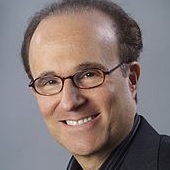Tel Aviv’s European Roots
What role did architecture play in creating Israel’s most secular city?
October 6, 2005
During the 1920s and early 1930s, a number of gifted architects — graduates of the best schools of architecture in Europe — settled in Tel Aviv.
These members of the Bauhaus school transformed the city into a test case for some of the most modern architectural styles.
They experimented in all aspects — ideology, design and texture — in a manner that was never expressed elsewhere.
They committed themselves to the implementation of revolutionary planning principles and new architectural language in Tel Aviv, creating and building a wealth of forms of high artistic quality, within modest means.
The terms “Bauhaus” and “International Style” were used to define the new trends in modern architecture that were flourishing in Europe — in Germany in particular.
There, the progressive architects — many of them Jews — found it more and more difficult to pursue their profession under the rising shadow of the Nazis.
These architects, fleeing the Nazis, arrived in British-ruled Palestine, where they joined local architects who had also studied in Europe.
And in Tel Aviv, they found a young city without an established building style.
“Nostalgic for home, they made a European city in the Levant,” noted Linda Grant, a British writer and author of “When I Lived in Modern Times,” set in Tel Aviv in 1946.
The members of the Bauhaus school, which had been established by Walter Gropius in 1919, argued that all arts — including architecture — should respond to the needs of society. This concept became the core of the architectural development of Tel Aviv.
Their progressive principles stressed the social responsibility of the architect towards the community. This went hand in hand with the ideology of the Zionist settlement in Palestine, in which liberal and socialist intellectuals who had emigrated from Europe were dominant.
In a way, the Bauhaus school, which wanted to establish a new society, seemed to be an almost perfect match for the radical Zionist project — which aimed at creating a modern Hebrew urban community in Tel Aviv.
Since the early 1930s through World War II, 100,000 inhabitants came to Tel Aviv and 4,000 buildings were constructed. A modern city arose north of Jaffa and “Little Tel Aviv.”
The new Tel Aviv was comprised of buildings of a uniform height of three to four floors, sun washed, with many balconies and gardens. The modernist structures were cubist, sculptural, economical and functional in their form.
It was a “garden city” of wide tree-lined boulevards. Within city blocks, small roads run toward smaller green spots, creating both a bustling urban exterior and a quiet local feeling inside.
Architects used concrete to create clean-lined, boxy buildings. Strong horizontal elements created patterns with very little ornamentation.
Local adaptations included long narrow windows and balconies to filter light and give shade from the sun. Curved balconies softened the stark austere lines of the buildings.
In an effort to keep interiors cool in humid Tel Aviv, angled skylights and small windows were installed. All of this was then whitewashed to create a city that shimmered.
The bright colors of the building style — white, off-white, light yellow — prompted the renowned poet Natan Alterman to coin the term “The White City.”
But since construction of these buildings ended in the 1950s, they have fallen into neglect. The rent control laws, in particular, make it difficult for the owners to maintain them. The once gleaming city has been covered in grime and is in desperate need of renovations.
But last year, the White City — a collection of 4,000 buildings in the boxy, minimalist Bauhaus style that make up the heart of Tel Aviv — won recognition by the United Nations Educational, Scientific and Cultural Organization (UNESCO) as a World Heritage Site.
Tel Aviv is only the second modern city to be recognized, out of 754 sites in more than 120 countries. The first modern city was Brasilia, the capital of Brazil, in 1987.
“Your city illustrates the treasure of modern heritage,” said UNESCO President Michael Omolewa when he presented the certificate to Tel Aviv's Mayor Ron Huldai in 2004.
Now hundreds of the city’s 4,000 or so Bauhaus-style buildings are being restored — repaired, painted in gleaming whites and pastels and returned to their former glory.
The city is offering unique incentives to the owners of the buildings to take on the expense of restoring their properties.
In exchange for committing themselves to restoration, for example, owners can receive permission to add additional floors to the building as long as the floors are as “unseen” as possible, blending in with the original structure. Also, some real estate-related taxes can be reduced.
Jewish nationalists and religious fundamentalists continue to try to establish new settlements in the West Bank, Gaza and Jerusalem as part of an effort to revive Zionism's claim to the biblical lands of Judea and Samaria.
Secular Tel Avivians have another plan. They are trying to accentuate Zionism's European and cosmopolitan roots from the early 20th century — symbolized, among other things, by reviving its international style.
In a way, the influx of Jewish immigrants from Europe in the 1920s and 1930s and the rise of the White City has boosted Tel Aviv as a major city.
“As a city, Tel Aviv is Jerusalem’s polar opposite,” writes Linda Grant. “Little if anything spiritual is to be found there. No holy sites or ancient antiquities are there to tempt the tourist. What is to be found is the life of urban Israel.”
And she adds that when it comes to Tel Aviv, “The sea is the constant, the only border that is uncontested.”
Read previous
Tony Blair on Globalization
October 5, 2005
